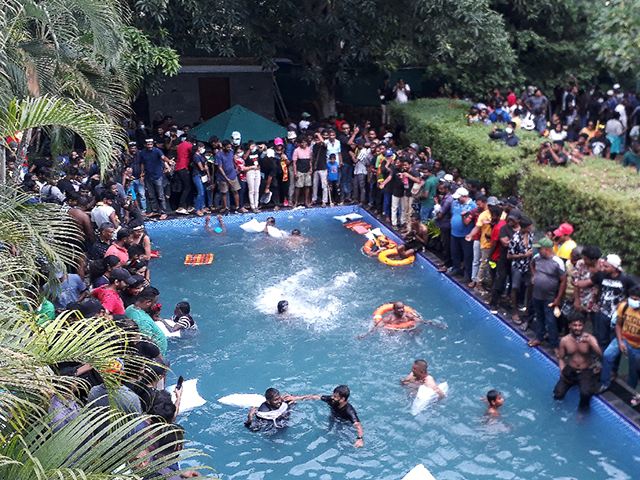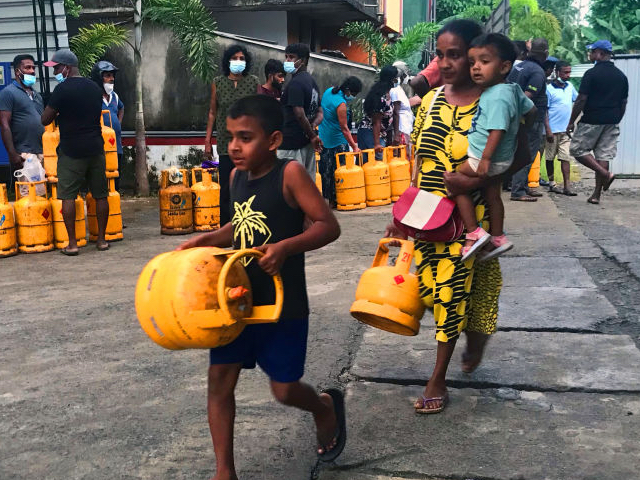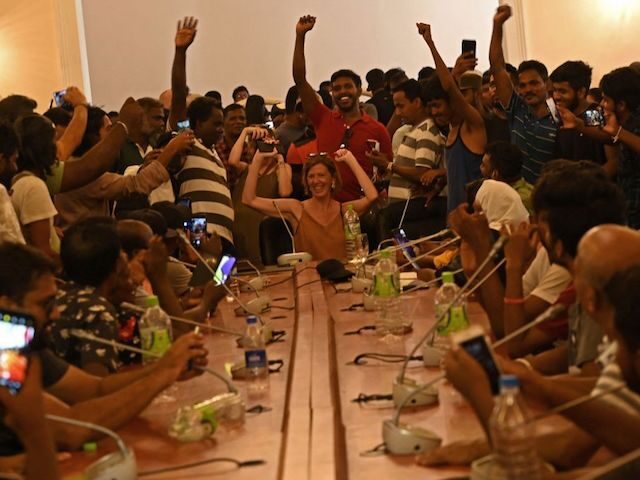The Sri Lankan Ministry of Health announced on Sunday that daily coronavirus infections have risen from ten to 25. The ministry advised residents to resume masking, social distancing, and getting vaccination boosters.
The nonplussed residents of the Democratic Socialist Republic of Sri Lanka have a lot of other things on their minds at the moment, such as the total collapse of their economy and government.
Dr. Hermantha Herath, the deputy director-general of Sri Lankan health services, said the uptick in coronavirus cases was a cause for “concern” but not “alarm.”
In truth, the bump in cases barely registers, as Sri Lanka’s last big coronavirus wave petered out in March. Since a key feature of Sri Lanka’s eventful spring and summer were huge, angry street protests, the increase in cases described by Dr. Herath seems smaller than might have been expected.
There appears to have been little concern for masking or social distancing during the protests. Last week, demonstrators stormed the estate of now-deposed President Gotabaya Rajapaksa, crowded into his backyard, and took a dip in his pool. A few of them could be seen wearing masks, but not many.

Protestors demanding the resignation of Sri Lanka’s President Gotabaya Rajapaksa swim in a pool inside the compound of Sri Lanka’s Presidential Palace in Colombo on July 9, 2022. (Photo by AFP)
The crumbled government of Sri Lanka was a disaster in most respects, but it did manage to get almost 80 percent of the population vaccinated with at least one dose, which helped its vital tourism industry recover from the Wuhan coronavirus pandemic.
Tourism in Sri Lanka has proven resilient enough to survive the coronavirus, terrorist bombings, and even the apocalyptic fall of the Rajapaksa government.
Sri Lanka’s acting president Ranil Wickremesinghe — recently upgraded from prime minister after Gotabaya Rajapaksa fled the country and resigned by email — declared a state of emergency on Monday. Protesters are still packing the streets and demanding his resignation as well.
Wickremesinghe blamed certain nefarious “elements within society” for continuing the protests, which he vowed would not interfere with his efforts to secure a bailout package from the International Monetary Fund (IMF).
Acting President Wickremesinghe has promised to step down after a unity government forms and elects a new president unless the unity parliament elects him, which is a distinct possibility because he is one of the front-running candidates. Despite his upbeat claims of progress on negotiating a bailout, the IMF seems disinclined to make a deal until a permanent government is established.
As some disgruntled Sri Lankan officials have been pointing out, Rajapaksa might have poisoned the country’s chances of securing international financial aid by borrowing billions of dollars from China and squandering the money on madcap socialist and environmentalist programs.

A mother and her child carry liquefied petroleum gas (LPG) cylinders in Colombo on June 11, 2022. (Photo by Pradeep Dambarage/NurPhoto)
Sri Lanka also blew a fortune on China’s woefully ineffective coronavirus vaccines, allegedly paying a much higher price per dose than other developing countries.
According to the United Nations World Food Program (WFP), food inflation in Sri Lanka has reached 58 percent, about 22 percent of the population requires food assistance, and 86 percent of families are skipping meals or eating substandard food to survive.

COMMENTS
Please let us know if you're having issues with commenting.